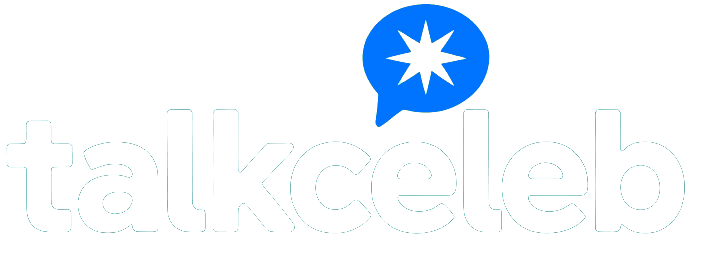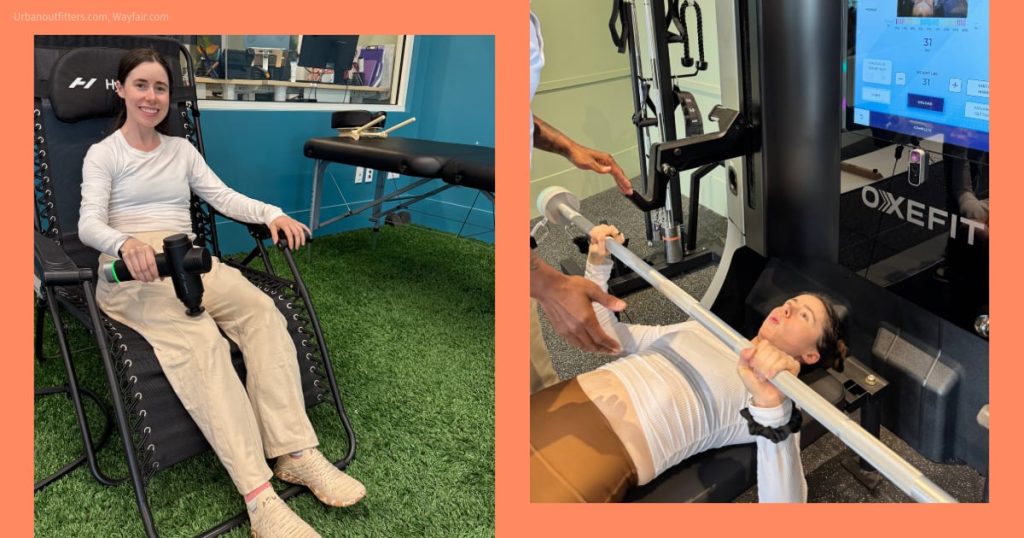:upscale()/2025/07/28/803/n/1922729/tmp_v5fay9_2d0f2c9515b5a70c_2_Up_Side_by_Side_-_Orange-2-Main_-_2_Up_-_Orange_5_.png)
:upscale()/2025/07/28/803/n/1922729/tmp_v5fay9_2d0f2c9515b5a70c_2_Up_Side_by_Side_-_Orange-2-Main_-_2_Up_-_Orange_5_.png)
Training for a marathon is more than just logging miles. Overall health, recovery, and nutrition are all important, too. But it’s easy to focus on “just running.” I’m guilty of the prioritization struggle, myself. But just a few weeks into training for the Boston Marathon, one of the most prestigious and challenging races in the United States, I realized that mileage alone wasn’t going to cut it. Enter Love Life, the holistic health and wellness club that became my one-stop shop for well-rounded training.
Over the next two months, I immersed myself in their recovery therapies, met with their on-staff doctors, and received specialized health testing. Spoiler: despite training for the marathon in only 12 weeks, I made it to the finish line without injury and feeling stronger than ever. And I’m not convinced that would have been the outcome without my Love Life experience. Ahead, learn all about my training at Love Life.
:upscale()/2025/07/24/672/n/1922729/tmp_dPeuiz_7d4bef3ab5765078_Recovery.jpg)
:upscale()/2025/07/24/672/n/1922729/tmp_dPeuiz_7d4bef3ab5765078_Recovery.jpg)
What Is Love Life Like?
Love Life is a new health club concept from John Mackey, the founder of Whole Foods. I went in expecting a gym, but it was so much more than that. In fact, even though I attended the space numerous times over two months, I didn’t even get to experience all the club had to offer — from pickleball and group fitness classes to the plethora of spa services. I’ll be honest and say, I didn’t even workout that often at the gym since I was running mainly outdoors. Instead, I was fully devoted to the recovery and health modalities — and those equally surpassed my expectations.
I’d been to gyms with steam, saunas, and maybe even a cold plunge. Love Life was all of that with a biohackers twist. I experienced red light therapy sessions, which can help reduce inflammation. I suited up in the full-body Balancer Pro Lymphatic Compression, a FDA-cleared lymphatic drainage technology that helps to improve circulation (If you’ve ever tried out Normatec boots, the Balancer Pro was like a full-body, medical grade version.) When I started to have knee pain, a session of PEMF (Pulsed Electromagnetic Field Therapy), kept the aches at bay.
:upscale()/2025/07/21/256/n/1922729/tmp_0KhqtT_75707e4785e3c844_Screenshot_2025-07-21_at_9.03.09_PM.png)
:upscale()/2025/07/21/256/n/1922729/tmp_0KhqtT_75707e4785e3c844_Screenshot_2025-07-21_at_9.03.09_PM.png)
Just as impressive as the high-tech and expensive gadgets, were the excellent practitioners. I saw Danel Lombard, MPT, PhD the in-house physical therapist, when I had a flare-up of knee pain the week before the race. I’d battled IT band injuries in the past and had been prioritizing stretching throughout my training. As it turns out, it wasn’t my knee or IT band that had been causing my pain, it was my quads. Lombard worked with me to target stretches for my quads that released that pain I was feeling on the side of my knee. It was an important reminder to consult with a doctor when experiencing pain and not assume it is an old injury.
The club also offers a medical component with its services, including a Dexascan to measure bone density and a 120 biomarker test. I met with Jacelyn Tolentino, DO, who approaches health with an emphasis on longevity and root causes. Tolentino went over the results of the Dexascan, which revealed my bone mass is in the expected range for my age, gender, and ethnicity. The biomaker test revealed a few areas where I could benefit from supplementation, specifically iron. Low iron can result in fatigue and as a mom-of-two with a full time job trying to train for a marathon, I did not need anything else to make me feel exhausted. I started to incorporate more iron-rich foods into my diet. Tolentino also ordered a 3×4 Genetic Test, a cheek swab test which provided pivotal insights for me.
The results from the 3×4 Genetic Test came in a comprehensive 31-page package. Sports Performance Dietician, Emily Mitchell, MD, RDN, CSSD, CDCES, explained the key takeaways. There was some good news: I learned that I respond well to caffeine and power training (yay!) and have a rare chance of developing celiac disease (also good news, as my diet was packed with white carbs for fuel.)
Then, came the potential concerns: I also learned that my body needs significant support to recover from exercise. It was recommended that I take two days of rest between intense workout sessions and to increase my protein intake. I was also alerted to the fact that my body may take longer to respond to endurance training. This hit me as I wrapped my head around the idea that it might take me longer to train for a marathon than the average person, but I also needed more recovery time and only had a few weeks left to get to the finish line.
How Did My Health Improve While At Love Life?
Rather than feeling defeated by the results of the 3×4 testing, I realized that this information was coming to me in a space where I could work on these issues. I made sure my weekly running plan allowed for recovery. This meant running three days a week and recovering for two days after my long runs. When I’d run the LA Marathon in 2013, I was running five days a week. I ended up getting injured shortly before the race. Even though I was in much better shape when I ran the LA Marathon — having run nearly a dozen half marathon races in the years immediately leading up to it — it was clear that overtraining took a toll on my body. When I signed up to run the Boston Marathon, I was just over a year postpartum with my second child, hadn’t run a distance longer than six miles in five years, and my weekly mileage was zero. Yet, I was able to complete the Boston Marathon injury-free thanks to finding a balance of work and recovery.
I was also able to improve my nutrition in an approachable way. I didn’t need to cook elaborate meals. Instead, Mitchell provided easy-to-follow tips including eating protein first at meals, adding a creatine supplement, and consuming a mix of protein and carbs within 30-60 minutes of finishing a workout. I noticed an improvement in my energy levels through implementing these changes. Instead of needing to nap after a long run, I was able to make it through the day.
Another unexpected perk from my Love Life experience: I did not get sick while training. This is miraculous considering I have two toddlers in daycare and spend a lot of time wiping their noses or having their noses wiped on my shirt. (We’re working on it.) I attribute a least some of the boost in immunity to using the sauna, steam, and cold plunge circuit a few times per week at Love Life. Saunas, in particular, have been studied to reduce the common cold — and I was able to use both their traditional Finnish saunas and their Sunlighten red light saunas. Cold plunges are also said to be beneficial for immune function.
My relationship with health also changed during my time at the gym. I completed the longevity screening, assessing strength and mobility, which is led by Davon Murray director of fitness operations. The screening uses an AI-powered machine called Oxe Fit and an incredibly challenging moving platform device called iMoove. Up to this point, I’d considered myself fit by what I could do in the moment, but the screening made me realize I should be training for my future. Yes, running a marathon is an excellent physically challenge, but my future self will thank me for incorporating strength training and mobility into my routine.
:upscale()/2025/07/21/256/n/1922729/tmp_yIFF19_4de6803473606e15_Screenshot_2025-07-21_at_9.04.56_PM.png)
:upscale()/2025/07/21/256/n/1922729/tmp_yIFF19_4de6803473606e15_Screenshot_2025-07-21_at_9.04.56_PM.png)
So, Is Love Life Worth It?
There are three tiers of membership available: silver (the medical-only membership for $650 per month or $7,500 per year), gold (the silver membership, plus full club access for $995 per month or $11,400 per year), and platinum (the gold membership, plus more diagnostic testing for $2,200 per month or $25,000 per year.). The platinum membership includes the full-spectrum of health with weekly personal training, an annual Prenuvo Full-Body MRI, and a 1 Liber8 Emotional Health Programming.
This is by far the most expensive gym I’ve ever trained at, but also the only one that includes medical appointments, nutritional consultations, and advanced health testing. If you have the disposable income to tap into this kind of personalized learning and recovery, I wouldn’t bat an eye at the price. But I also understand that this is a steep service for the average person — myself included, who probably wouldn’t have gotten this opportunity if I had any other job. At the end of the day, it was incredibly helpful to optimize my health while training for a marathon after having children. But now that I’ve returned to my regular fitness routine, having access to the club’s five annual physician appointments and ten acute care appointments is not as necessary. Moving forward, I’ll just be building upon my Love Life takeaways with daily movement, strength training, and mobility work.
Genevieve Farrell Roston (she/her) is an award-winning filmmaker and the director of video at PS. She oversees the Webby-nominated PS Fit video series, which makes fitness fun and accessible. She has more than 10 years of experience in the entertainment industry. A certified personal trainer, she loves running, Pilates, and rest days. As a mom of two, she is an avid reviewer of children’s gear and products.

